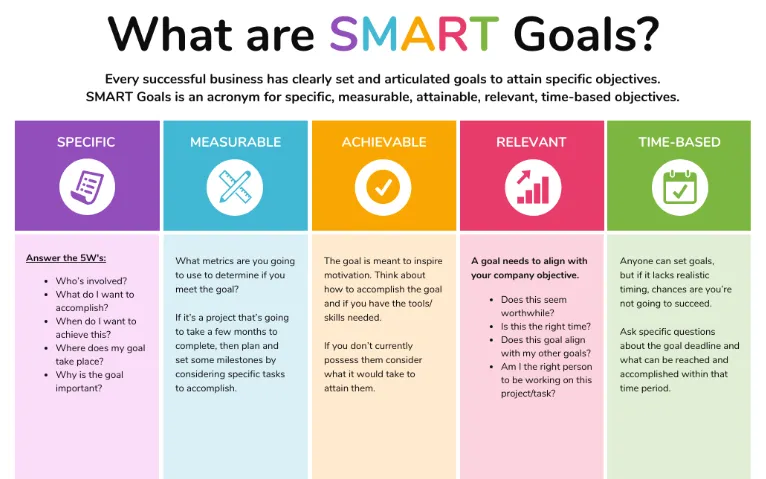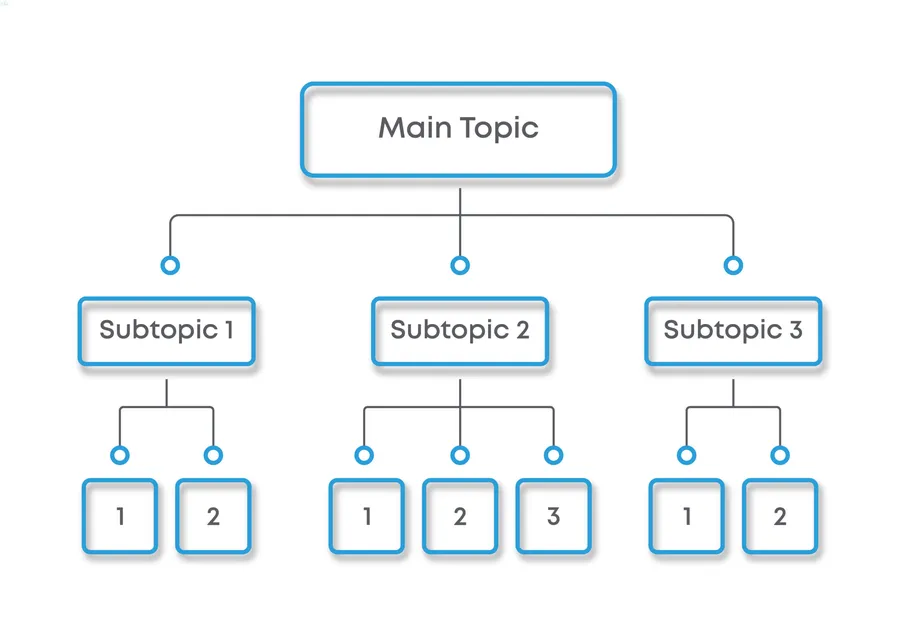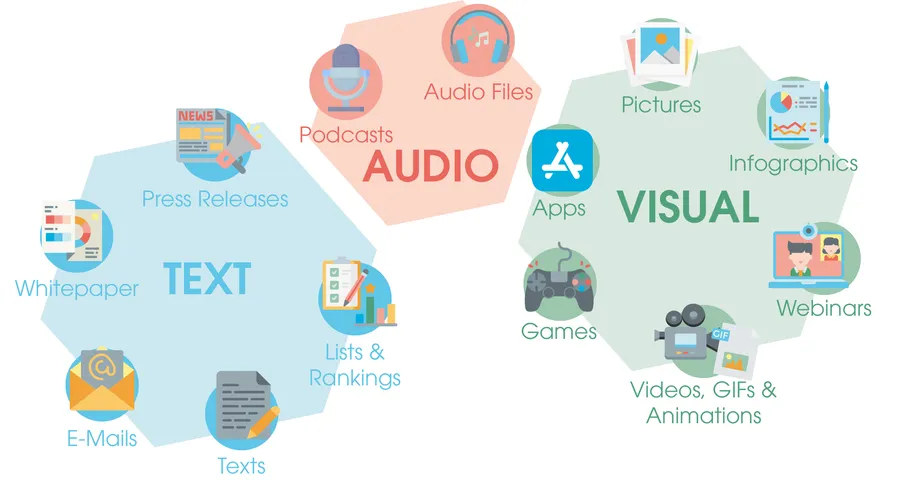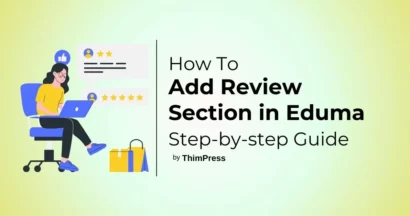Are you an educator, entrepreneur, or subject matter expert? If so, creating an online course can be rewarding to share your knowledge and build a thriving business.
But with so much competition, simply having great content isn’t enough. To succeed, you need a compelling online course structure that keeps students engaged, motivated, and coming back for more.
A well-optimized course structure is like a roadmap that guides your students through the learning journey. It ensures a smooth and enjoyable experience, leading to higher completion rates, improved knowledge retention, and greater student satisfaction.
Eduma – Education WordPress Theme
We provide an amazing WordPress theme with fast and responsive designs. Let’s find out!
In this article, we’ll explore 5 proven strategies to optimize your online course structure and create a truly transformative learning experience.
1. Define Clear Learning Objectives to Optimize Your Online Course Structure
Before you even start creating your course content, it’s crucial to establish crystal-clear learning objectives.
Ask yourself: what specific knowledge, skills, or outcomes do you want your students to gain by the end of the course?
Clearly defined learning objectives are the foundation of a successful online course.
They act as a roadmap, guiding your content creation and ensuring every element of your course contributes to the desired learning outcomes.

Instead of vague goals like “understand marketing,” aim for specific, measurable, achievable, relevant, and time-bound (SMART) objectives like:
- “Create a comprehensive marketing plan for a small business within one week of completing the course.”
- “Analyze website traffic data using Google Analytics and identify areas for improvement.”
- “Confidently run a Facebook Ads campaign to generate leads for your business.”
Once you’ve defined your learning objectives, don’t keep them a secret! Communicate these objectives to your students at the beginning of the course and within each module.
This transparency helps students understand what they’ll be learning and how it will benefit them, increasing their motivation and commitment to the course.
You can present learning objectives in various ways:
- Course Overview: Include a dedicated section outlining the overall learning objectives.
- Module Introductions: Start each module by stating the specific objectives students will achieve.
- Checklists: Provide downloadable checklists of learning objectives that students can refer to throughout the course.
By setting and communicating clear learning objectives, you’ll create a focused and purposeful learning experience that keeps students engaged and on track.
2. Chunk Content into Digestible Modules to Optimize Your Online Course Structure
Have you ever felt overwhelmed by a massive textbook or a lengthy lecture? Our brains are wired to learn in smaller, more manageable chunks.
This is where the concept of “chunking” comes into play in online course development.

Chunking involves breaking down your course content into bite-sized modules, each focusing on a specific topic or concept. This approach, often referred to as microlearning, offers several benefits:
- Improved Knowledge Retention: Smaller chunks of information are easier to process and remember.
- Increased Engagement: Shorter modules keep students focused and prevent them from feeling overwhelmed.
- Flexibility and Convenience: Students can learn at their own pace and fit learning into their busy schedules.
Your online course is as a series of stepping stones, with each module representing a step towards the final learning goal.
When organizing your modules, think about the natural progression of learning. Structure your content in a logical sequence, building upon previously learned concepts and gradually introducing new information.
For example, if you’re teaching a course on digital marketing, you might start with a module on foundational marketing principles, followed by modules on specific channels like social media marketing, email marketing, and search engine optimization (SEO).
A clear and logical flow between modules ensures a smooth and coherent learning experience, preventing students from feeling lost or confused.
3. Diversify Your Content Delivery to Optimize Your Online Course Structure

To cater to different learning styles and keep students engaged, it’s essential to incorporate a variety of content formats into your online course structure.
Don’t rely solely on video lectures. Instead, mix things up with:
- Text-based materials: Provide downloadable PDFs, articles, or ebooks to complement your video content.
- Audio recordings: Offer podcasts or audio lectures that students can listen to on the go.
- Interactive exercises: Include quizzes, polls, interactive simulations, and games to reinforce learning and make the experience more engaging.
- Downloadable resources: Provide checklists, templates, worksheets, and other valuable resources that students can use and refer to even after completing the course.
Adapting and diversifying how content is presented or delivered to students enhances the learning experience and creates an active environment where students are more engaged in the course.
Fortunately, there are numerous tools and technologies available to help you create diverse and engaging learning materials.
Video creation: Use tools like Camtasia, Screenflow, or Kapwing to record and edit high-quality video lectures.
Interactive content: Platforms like Articulate Storyline, Adobe Captivate, H5P, and LearnPress allow you to create interactive simulations, quizzes, and games.
Graphic design: Use Canva or Adobe Spark to create visually appealing presentations, infographics, and social media graphics.
Explore different tools and find what works best for you and your course content.
4. Foster Interaction and Engagement to Optimize Your Online Course Structure

One of the challenges of online learning is the potential for isolation. To combat this, it’s important to foster a sense of community and encourage interaction among your students.
Here are some effective strategies:
- Discussion forums: Create dedicated forums where students can ask questions, share insights, and engage in discussions with each other and you.
- Group projects: Assign collaborative projects that encourage teamwork and peer-to-peer learning.
- Live Q&A sessions: Host regular live sessions where students can ask questions and receive real-time feedback.
- Social media groups: Create a private Facebook group or use other social media platforms to facilitate communication and community building.
Active interaction, group activities, and contact with instructors can completely change the online course from being a boring session to an exciting learning child.
In addition to fostering community, you can boost engagement by incorporating interactive elements throughout your course.
- Quizzes: Use quizzes to assess understanding, reinforce key concepts, and provide immediate feedback.
- Polls: Use polls to gather opinions, spark discussions, and make students feel involved.
- Games and simulations: Gamified learning can be a powerful way to make learning fun and memorable.
Platforms like Thinkific, Teachable, Kajabi, and LearnPress offer built-in features to create interactive elements within your online courses.
5. Provide Ongoing Support and Feedback to Optimize Your Online Course Structure

As an online instructor, your role extends beyond simply delivering content.
Students need ongoing support and guidance throughout their learning journey.
Make yourself available to answer questions, provide clarification, and offer encouragement.
You can provide support through various channels:
- Email: Respond to student emails promptly and professionally.
- Discussion forums: Actively participate in forum discussions and answer student questions.
- Live Q&A sessions: Schedule regular live sessions to address student queries and provide personalized feedback.
- Office hours: Offer virtual “office hours” where students can schedule one-on-one consultations with you.
When you show presence and respond to your students, there will be trust and a conducive climate will be established for learning.
Feedback is essential for student growth and improvement. When providing feedback, focus on being constructive and encouraging.
- Highlight strengths: Acknowledge what students are doing well and provide positive reinforcement.
- Offer specific suggestions: Instead of general comments, provide specific and actionable suggestions for improvement.
- Focus on growth: Frame feedback as an opportunity for learning and development.
Remember, your feedback can have a significant impact on student motivation and success.
Optimizing Your Course Structure with Content Drip Add-on
If you are using LearnPress to create and sell online courses then take advantage of the Content Drip Add-on for LearnPress to configure your online course accordingly.

Content can be delivered in a controlled manner, helping to grow your learners without losing their interest.
With Content Drip Add-on, instructors don’t have to deliver all of the lessons at once, instead, lessons, quizzes, and modules are distributed and released in stages.
This technique has been shown to increase retention of newly learned knowledge, improve course completion rates, and keep learners engaged in the course.
Use the Content Drip Add-on to specify exact dates or intervals for content to be released within a given lesson, helping learners take each step of the learning process.
This feature works well in cases where the course is designed in a way that each lesson builds on the previous lessons to avoid learners from learning ahead and missing out on basic concepts before moving on to the advanced parts of the content.
The Content Drip feature is well integrated into the LearnPress system, allowing course designers to set when or how often the course is available to learners, notify learners when new lessons are available, and design a dynamic learning system that adapts to the pace of the learners.
More specifically, if you buy Eduma, you will get 21 more LearnPress Add-ons including Content Drip Add-on.
Check out the main features of Eduma and LearnPress at Eduma – Education WordPress Theme.
Conclusion
Creating a successful online course requires more than just great content. It demands a well-thought-out online course structure that guides students, keeps them engaged, and helps them achieve their learning objectives.
Following these five strategies explained in this article; defining learning goals, dividing subjects in small parts, availing content in various forms, promoting interactivity and involvement, as well as ensuring feedback and support, you can enhance your online course in the best possible way.
Read more: 12+ Best Online Course WordPress Plugins
Contact US | ThimPress:
Website: https://thimpress.com/
Fanpage: https://www.facebook.com/ThimPress
YouTube: https://www.youtube.com/c/ThimPressDesign
Twitter (X): https://twitter.com/thimpress



